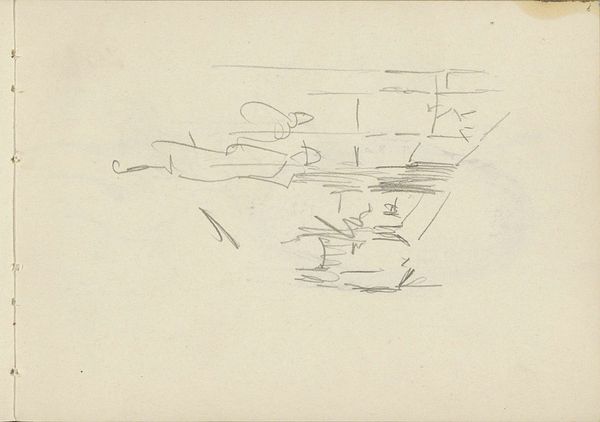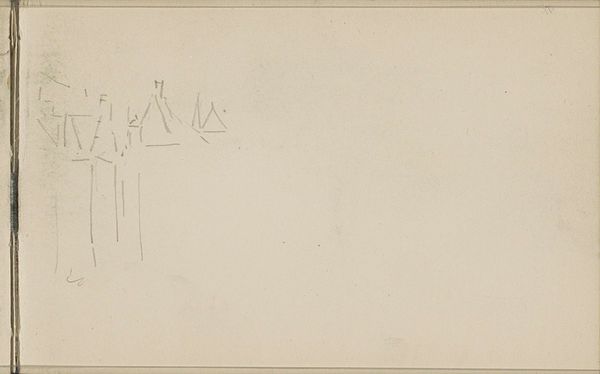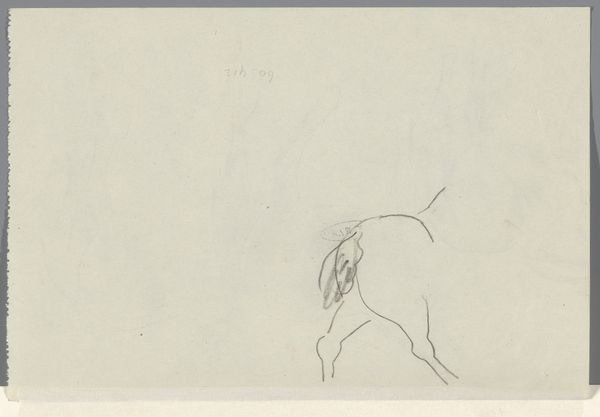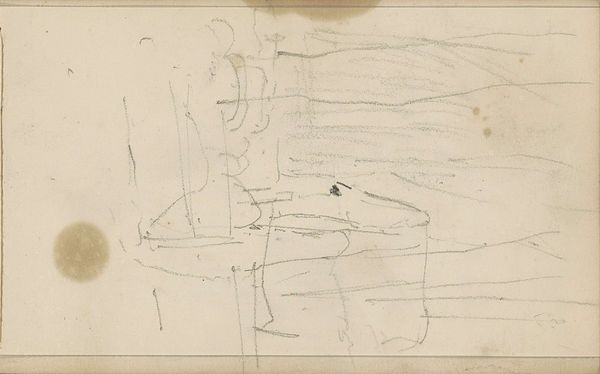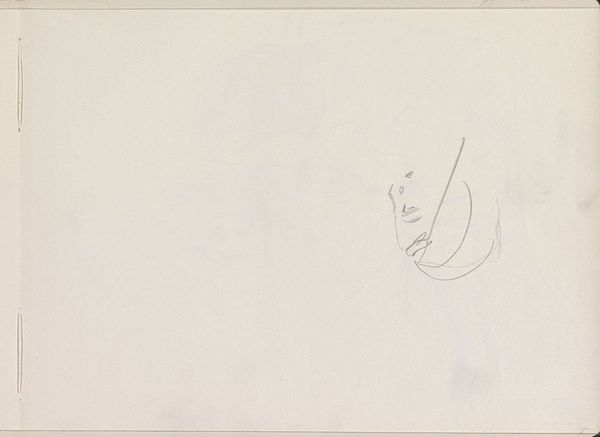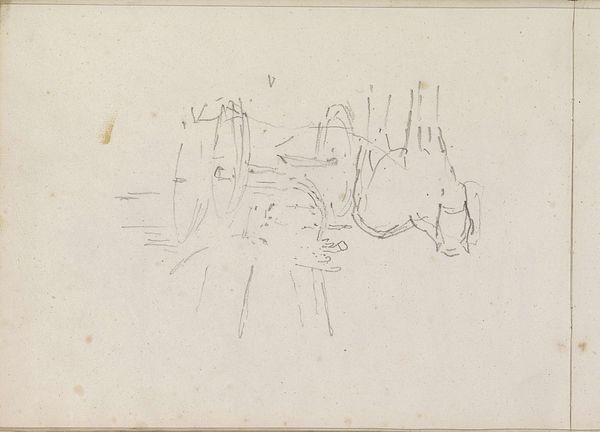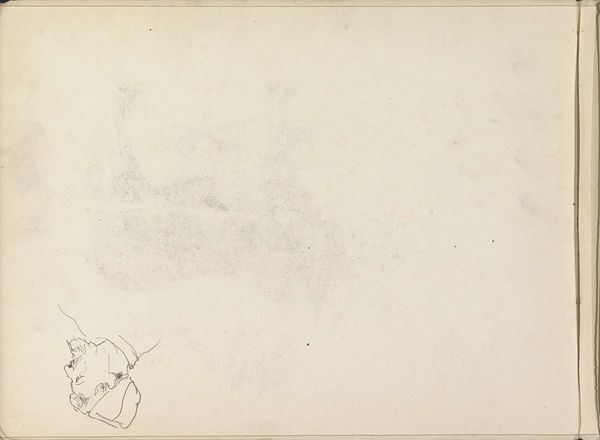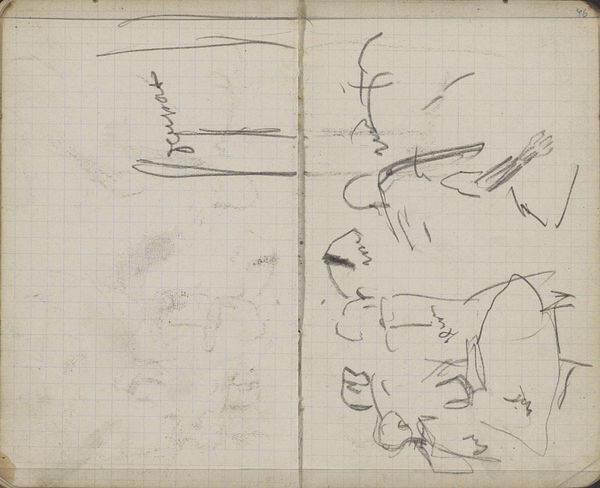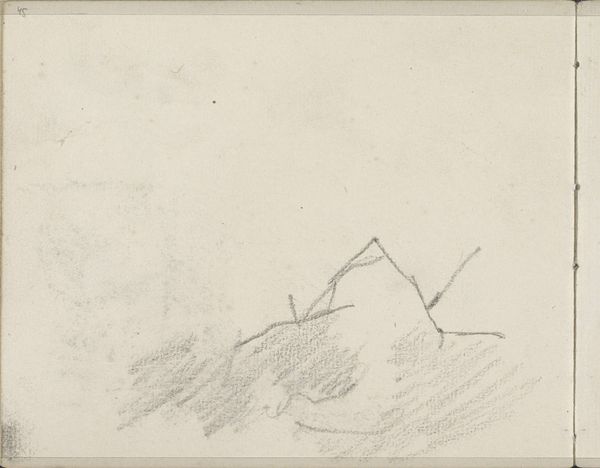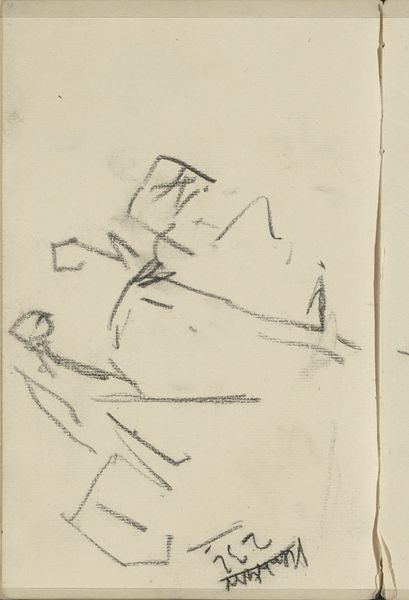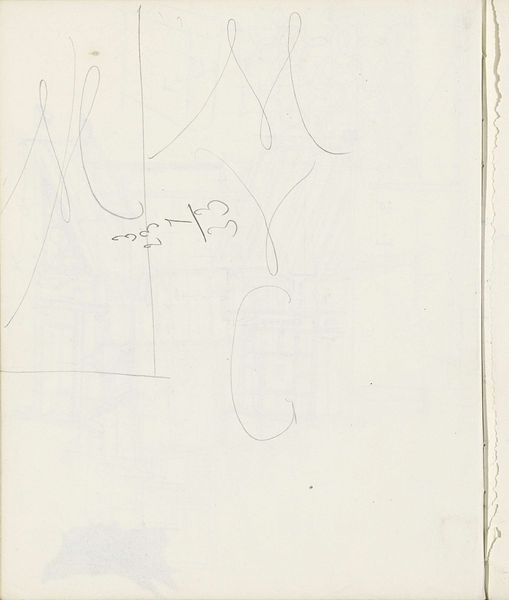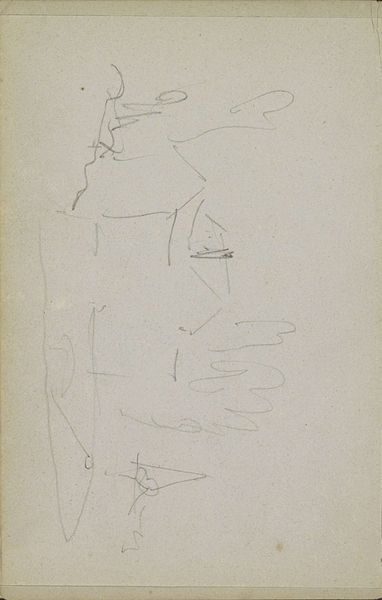
Copyright: Rijks Museum: Open Domain
Editor: So, here we have "Figure Studies, possibly acrobats on unicycles" by Isaac Israels, done sometime between 1875 and 1934, a pencil drawing on paper. It's very sparse, almost gestural. What do you see in this piece? Curator: I see Israels capturing fleeting moments of everyday life, perhaps a circus scene, reflecting a broader societal fascination with performance and the body in motion during that period. Think about the representation of working-class entertainment. Were these figures valorized or exploited? How does Israels, as an artist from a privileged background, engage with these themes of labour and spectacle? Editor: That’s a great point about his background shaping his view. It seems unfinished though. Was it just a study? Curator: Perhaps, but even as a sketch, it reveals an interest in the dynamics of the human form and its relationship to broader social themes. Consider the power dynamics inherent in spectatorship. Who gets to watch whom? Whose stories are being told, and whose are being left out of the frame? Israels may be simply capturing motion, but is also participates in, perhaps even critiques, a social system. What do you make of the possibility that these are performers? What's compelling or problematic about the act of witnessing their skill? Editor: It’s fascinating to consider the work beyond just the aesthetic. The act of observation itself carries so much weight. Curator: Precisely! Art isn't created in a vacuum. Context is key to understanding the visual languages that are constructed and expressed in art. Editor: Thanks, this changed the way I see this seemingly simple sketch!
Comments
No comments
Be the first to comment and join the conversation on the ultimate creative platform.
